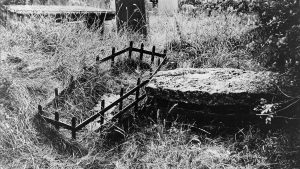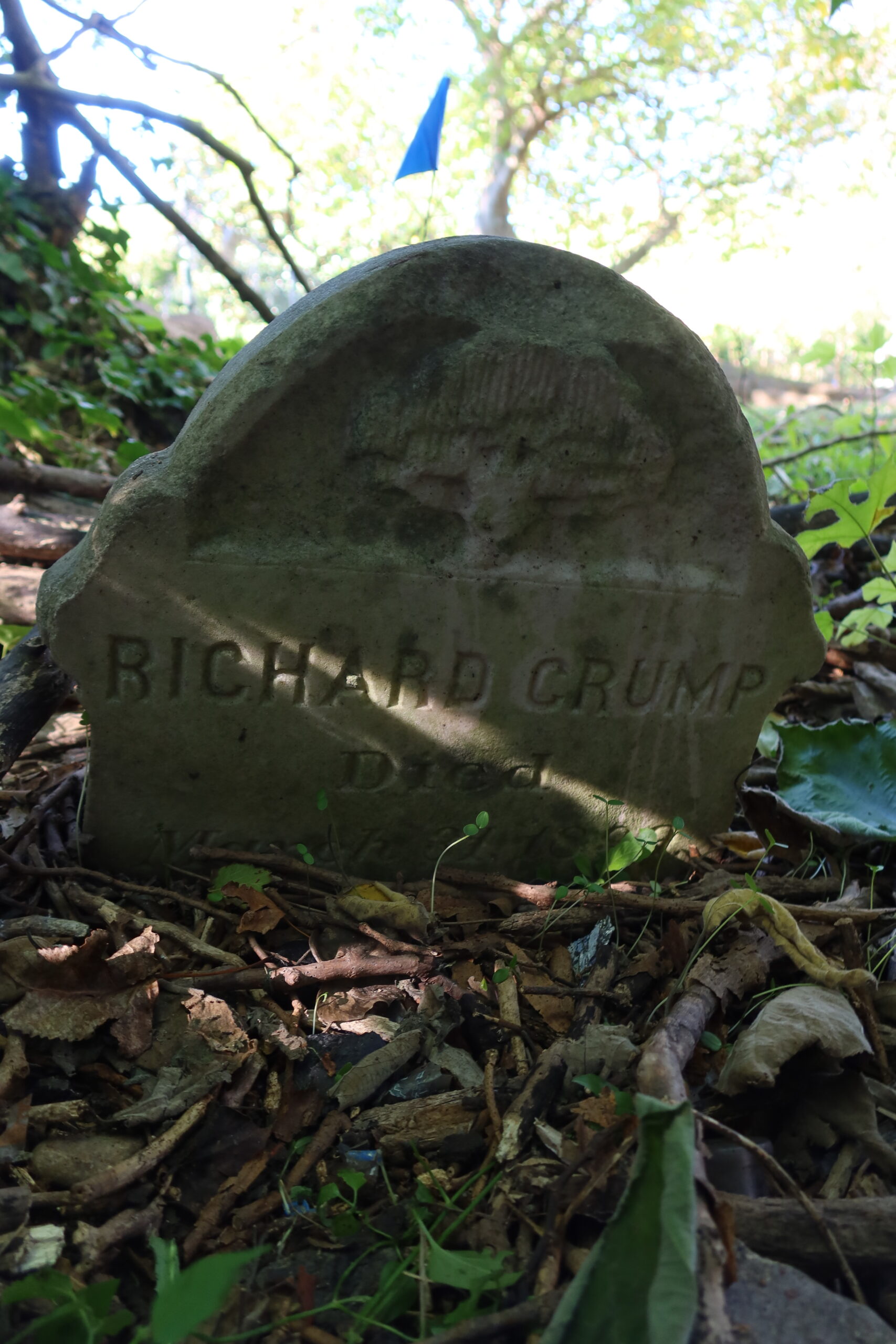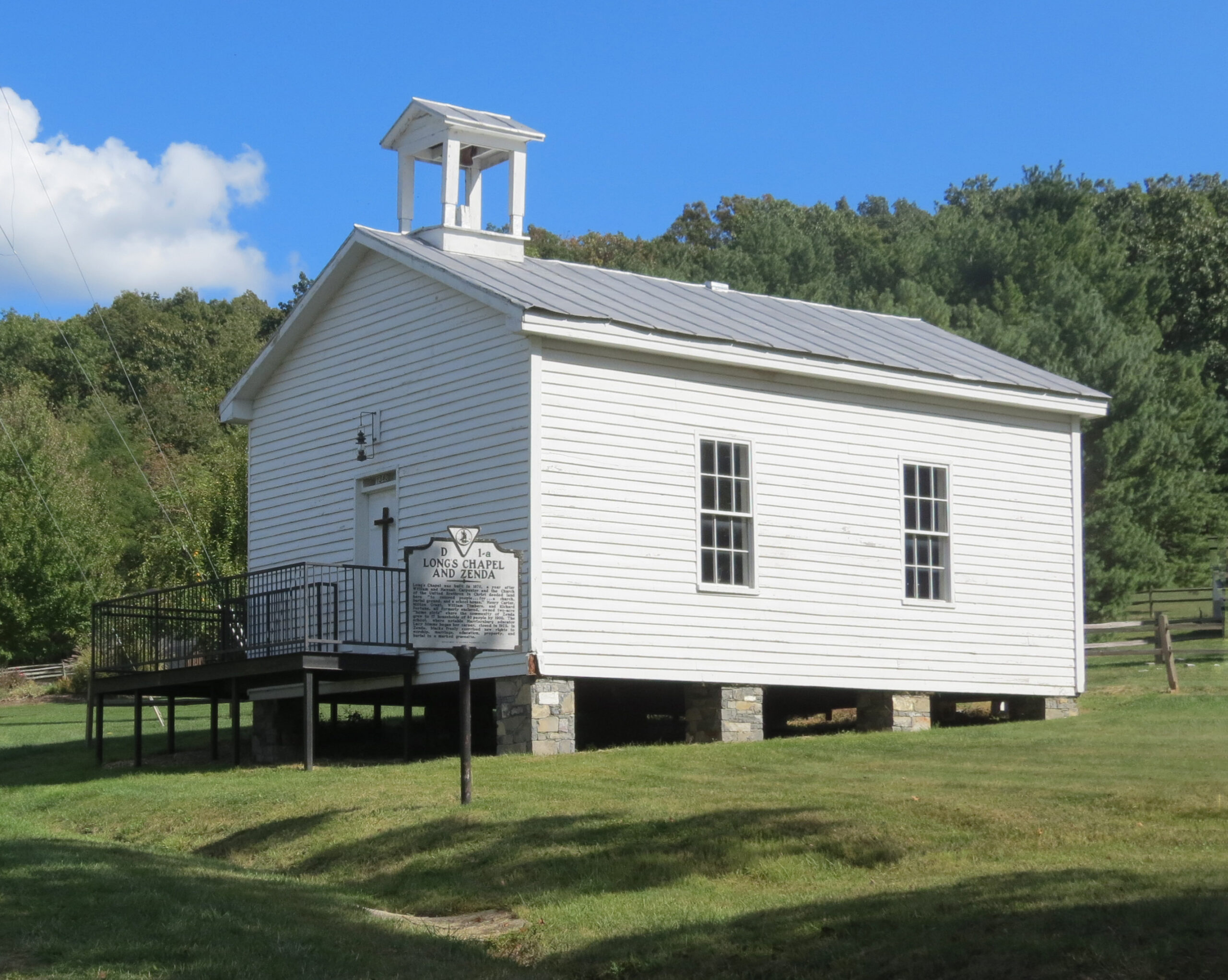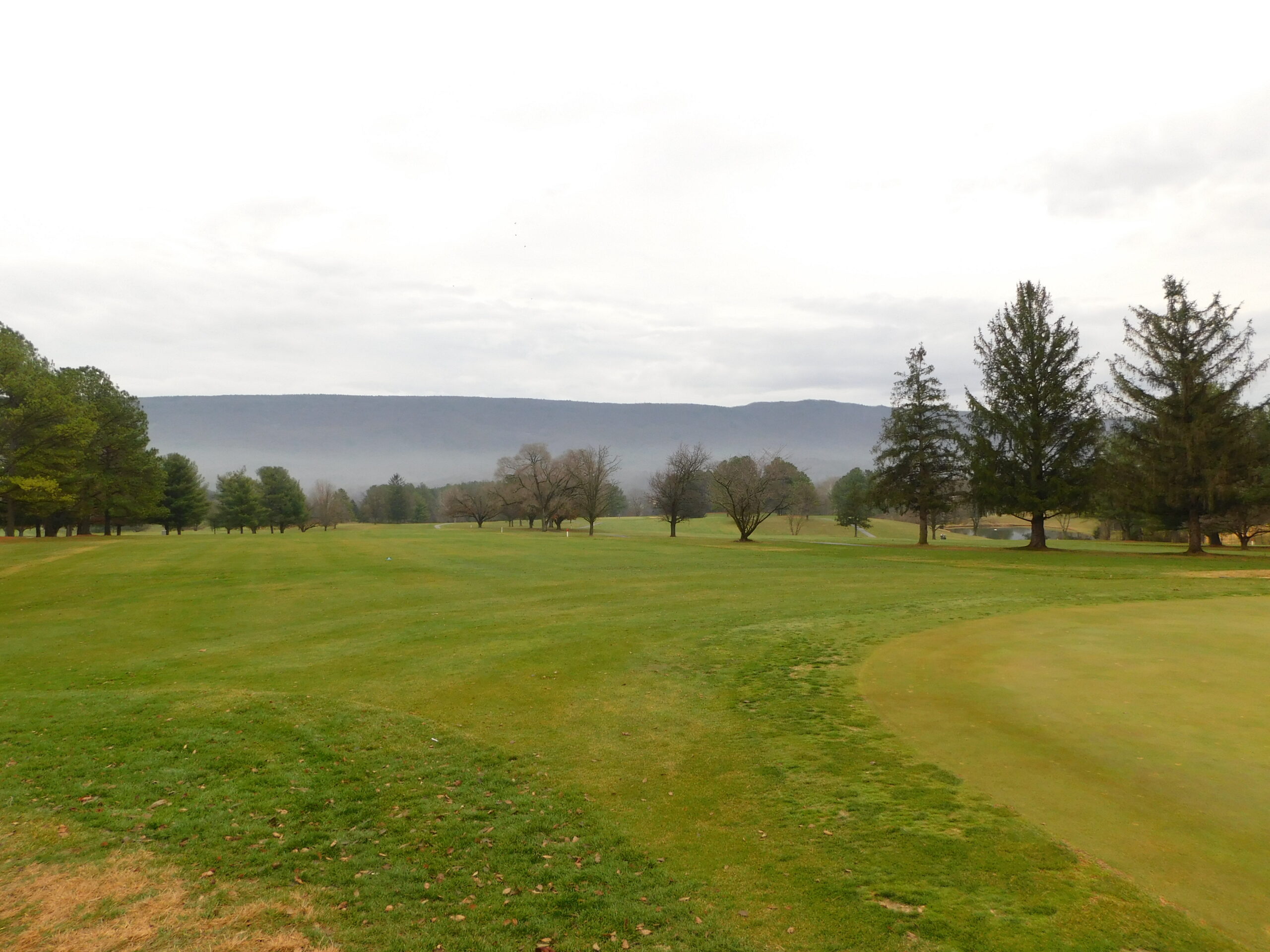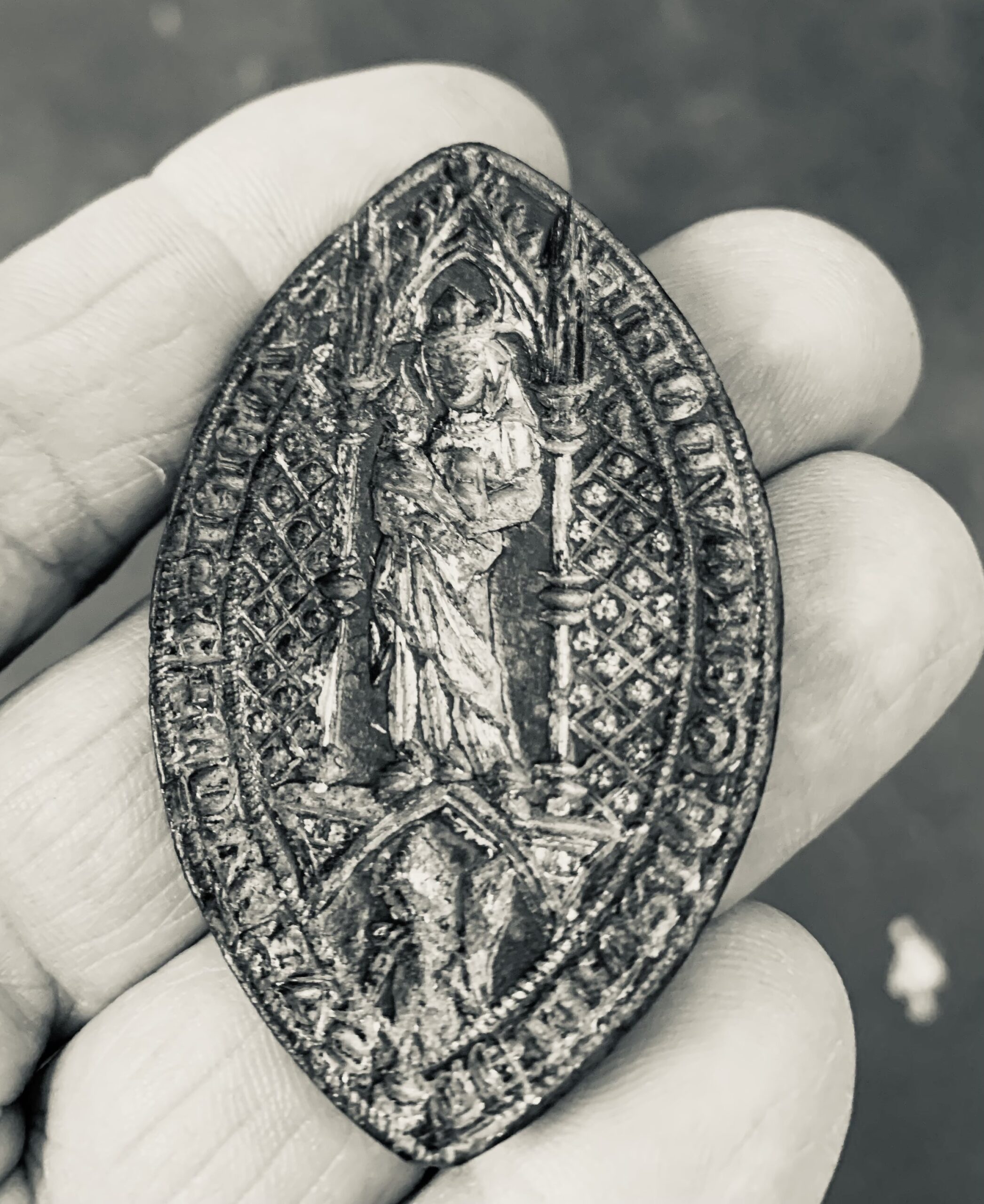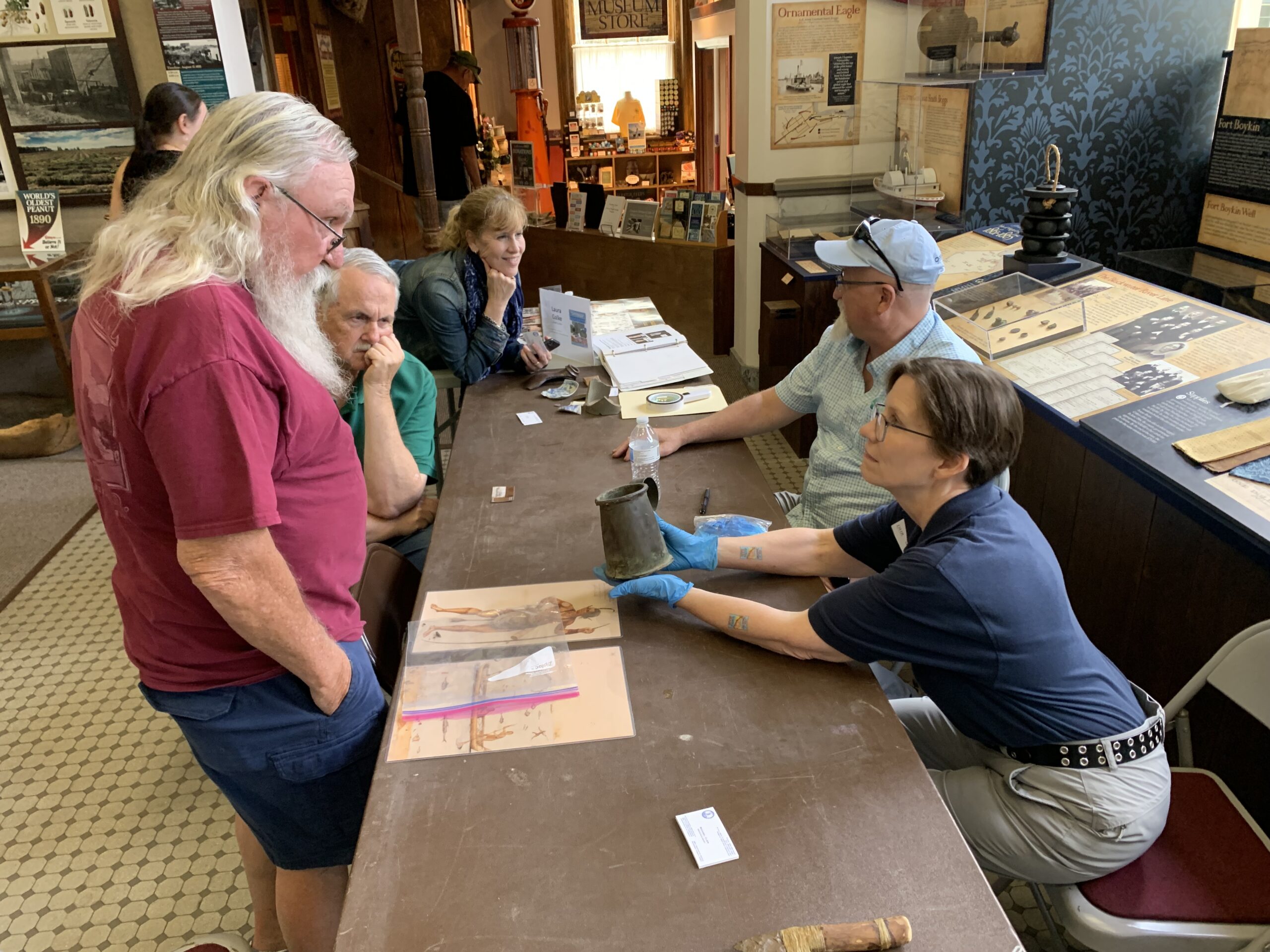Mortsafes
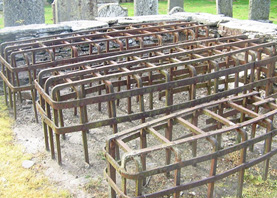
Occasionally with this newsletter, we will write about cemeteries and funerary practices from beyond the Commonwealth and look around the world. Because the United States is a melting pot of cultures, it is also a potpourri of funeral rites and ways to memorialize those who have passed away. There is always a chance you will see something in a cemetery that is unexpected because of this cultural diversity. Mortsafes are one such example, although you probably have never seen one in Virginia.
So, what are they and why do you hope you never need one? In short, a mortsafe resembles an iron cage covering a burial plot. When encountering one in a graveyard, an American’s first thoughts might be, Are they expecting a vampire to try to escape? Is this our first defense against an army of the undead? While the real answer is not so supernatural, it is no less dramatic.
You are most likely to find a mortsafe in Scotland these days. They were designed for keeping folks from raising the dead, but not in the way you might expect. The popularity of these contraptions arose when people known as “Resurrectionists” were plying their trade. While that label suggests such folks were a part of a religious sect, they in fact were stealing corpses for students to examine during anatomy lessons at the local medical school.
Before modern laws were set in place to give medical schools access to human remains, anatomy professors struggled to acquire bodies. Those of prisoners condemned to death would end up on their tables, but there were nowhere near enough bodies to meet demand. This led to a black market in the remains of the recently deceased. Eventually the problem became so bad that some decided not to wait for people to die a natural death and they started killing people and delivering them straight to anatomy professors. The most famous of these serial killers were William Burke and William Hare in Edinburgh.
Many people could not afford to purchase a mortsafe to guard their remains or those of their beloved ones. But the devices could be rented. Realistically, once a deceased body reached a certain level of decomposition, anatomy professors were no longer interested in the cadaver and the dead could safely rest in peace instead of resting in pieces at a medical school. Then the mortsafe could be removed and re-rented.
The first medical schools in Virginia were founded in the early 1800s (UVA in 1827 and Hampden-Sydney in 1838). Like other medical schools, they had anatomy classes. So why do we not see mortsafes in Virginia? Why is there less discussion of body snatching? As with much of the history of the commonwealth, the answer is tied to slavery and the marginalization of Blacks. Southern medical schools would hire local slaves from their owners, and later hired freed Blacks, to negotiate cadaver prices with Black communities so the schools’ proxies could dig up the recently deceased. The bodies of other people of color and poor whites were also at risk. Akin to body snatching, such unethical practices that targeted low economic and social status groups were much less likely to attract the attention of those that could institute change.
So the next time you see an iron cover on a grave (if you do), spare a thought for why it was even needed. Mortsafes are fairly rare these days. They were discarded, re-purposed or recycled as the practice of bodysnatching waned. If you find one in Virginia, we here at the Department of Historic Resources would love to hear about it! Email me at katherine.ridgway@dhr.virginia.gov.
–Katherine Ridgway
State Archaeological Conservator
Further reading:
- Echoes of the Resurrection Men
- Jefferson's University: The Anatomical Theatre (1825-1939)
- "Theater of the Macbre" from UVA's magazine Virginia.
